“A Delicious and Nutritious Guide to Crafting White Fruit and Winter Melon Porridge: A Traditional Recipe for Modern Times”**
White fruit and winter melon porridge, a beloved dish in many Asian cuisines, combines the earthy sweetness of ginkgo nuts (commonly known as white fruit) with the refreshing mildness of winter melon. This humble yet nourishing recipe has been cherished for generations due to its simplicity, health benefits, and ability to soothe the soul. Perfect for hot summer days or chilly winter evenings, this porridge offers a balance of flavors and textures that appeal to both traditional palates and modern food enthusiasts. In this comprehensive guide, we will explore the step-by-step process of preparing this dish, delve into its cultural significance, and uncover the nutritional powerhouses behind its ingredients. Whether you’re a seasoned home cook or a curious beginner, this recipe promises to deliver a bowl of comfort with every spoonful.
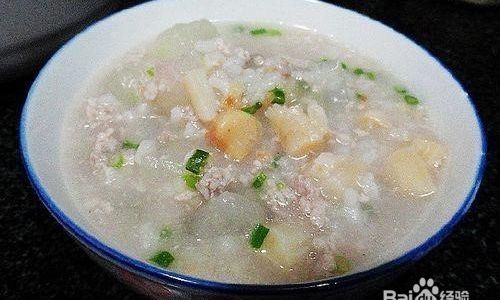
The Ingredients: A Symphony of Nature’s Bounty
To create a perfect pot of white fruit and winter melon porridge, you’ll need a handful of fresh, high-quality ingredients. The star players are:
- White Fruit (Ginkgo Nuts): These ivory-colored nuts, harvested from the ginkgo tree, add a subtle, slightly sweet flavor and a creamy texture. They are rich in antioxidants, vitamins, and minerals, making them a prized ingredient in traditional medicine.
- Winter Melon: A large, pale green gourd with a mild, almost neutral taste, winter melon acts as the porridge’s base. Its high water content and low-calorie profile make it ideal for hydration and weight management.
- Rice: Short-grain white rice is traditionally used for its ability to break down into a creamy consistency when cooked. However, brown rice or jasmine rice can be substituted for added fiber or aromatic notes.
- Water or Broth: While water is standard, vegetable or chicken broth can elevate the porridge’s depth of flavor.
- Seasonings (Optional): A pinch of salt, a drizzle of sesame oil, or a sprinkle of chopped cilantro can enhance the dish without overpowering its natural taste.
For a standard serving of 4–6 people, measure out:
- 1 cup of white fruit (shelled and prepped)
- 2 cups of diced winter melon (peeled and seeded)
- ½ cup of rice (rinsed)
- 6 cups of water or broth
- ½ teaspoon of salt (adjust to taste)
Preparation: The Art of Prepping Ingredients
Before lighting the stove, meticulous preparation ensures a seamless cooking process.
-
Shelling the White Fruit:
Ginkgo nuts are encased in a hard, leathery shell. To remove them:- Gently crack the shell using a nutcracker or the flat edge of a knife.
- Extract the nut, being careful not to damage the delicate kernel inside.
- Remove the bitter embryonic tip by slicing it off with a paring knife. This step is crucial, as the tip contains trace amounts of toxins that can cause discomfort if ingested in large quantities.
-
Prepping the Winter Melon:
Winter melon’s thick, waxy skin requires thorough peeling:- Use a sturdy vegetable peeler to strip away the green outer layer.
- Halve the melon and scoop out the seeds and pulp using a spoon.
- Dice the flesh into ½-inch cubes for even cooking.
-
Rinsing the Rice:
Place the rice in a fine-mesh sieve and rinse under cold water until the liquid runs clear. This removes excess starch, preventing the porridge from becoming gluey.
Cooking Process: From Stovetop to Steaming Bowl
Now, let’s transform these ingredients into a velvety, comforting porridge.
-
Boiling the Base:
- In a large pot, bring the water or broth to a rolling boil over medium-high heat.
- Add the rinsed rice, stirring gently to prevent clumping.
- Reduce the heat to low, cover the pot, and let it simmer for 20–25 minutes. Stir occasionally to ensure the rice doesn’t stick to the bottom.
-
Incorporating the White Fruit:
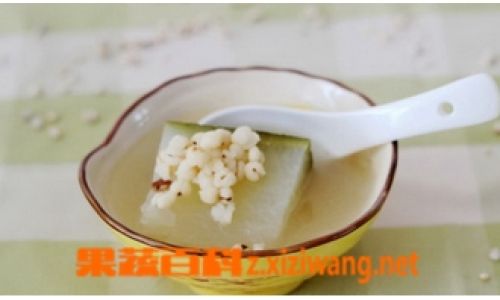
- Once the rice has softened and begun to break down, add the prepared white fruit.
- Stir gently and simmer for an additional 10–15 minutes. The nuts will soften slightly, releasing their creamy texture.
-
Adding the Winter Melon:
- Toss in the diced winter melon and stir to combine.
- Cover the pot and cook for another 15–20 minutes, or until the melon cubes turn translucent and tender.
-
Seasoning and Final Touches:
- Taste the porridge and adjust the seasoning with salt or a pinch of sugar if desired.
- For added richness, drizzle a teaspoon of sesame oil or garnish with thinly sliced green onions.
Troubleshooting Common Issues
- Porridge Too Thick? Gradually stir in ¼ cup of hot water or broth until the desired consistency is achieved.
- Porridge Too Thin? Simmer uncovered for 5–10 minutes to allow excess liquid to evaporate.
- Burnt Bottom? Immediately transfer the porridge to a new pot to halt cooking, discarding any charred bits.
Nutritional Powerhouse: Why This Porridge Deserves a Spot on Your Table
Beyond its comforting taste, white fruit and winter melon porridge is a nutritional powerhouse.
-
White Fruit (Ginkgo Nuts):
- Rich in antioxidants like flavonoids and terpenoids, which combat oxidative stress.
- Contains vitamins C and B-complex, supporting immune function and energy metabolism.
- May improve brain health and circulation due to its ginkgolide content.
-
Winter Melon:
- 96% water content aids hydration and detoxification.
- Low in calories (just 14 calories per 100g) and high in dietary fiber, promoting satiety and digestive health.
- Packed with potassium, magnesium, and vitamins B1 and B3, essential for heart and nerve function.
-
Rice:
- A prime source of carbohydrates, providing sustained energy.
- Short-grain rice offers resistant starch, which supports gut health.
Cultural Significance: A Bowl of Tradition
In many Asian cultures, porridge symbolizes nourishment, simplicity, and familial love. White fruit and winter melon porridge, in particular, holds a special place in traditional medicine. During the summer months, it’s consumed to combat heatstroke and promote “cooling” within the body, a concept rooted in Traditional Chinese Medicine (TCM). The dish’s gentle, soothing nature also makes it a popular choice for convalescents or the elderly.
Variations and Customizations
One of the porridge’s greatest strengths is its adaptability. Experiment with these twists:
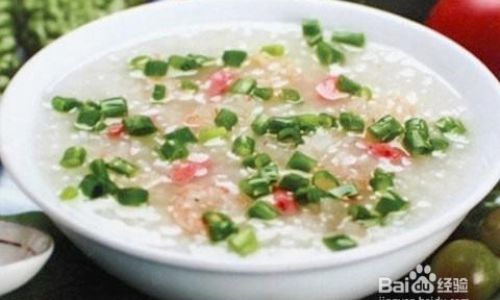
-
Sweet Variation:
- Add a tablespoon of rock sugar or honey during the final minutes of cooking.
- Serve with a dollop of coconut milk or a sprinkle of toasted sesame seeds.
-
Savory Twist:
- Infuse the broth with ginger slices or dried shrimp for umami depth.
- Top with crispy fried shallots or a soft-boiled egg.
-
Vegan-Friendly:
- Use vegetable broth and omit animal-based seasonings.
- Enhance flavor with a splash of soy sauce or a handful of chopped mushrooms.
Serving Suggestions: Pairing Perfection
This porridge shines when paired with complementary sides:
- Pickled Vegetables: A tangy, crunchy accompaniment like daikon radish or cucumber cuts through the porridge’s richness.
- Stir-Fried Greens: Lightly sautéed bok choy or spinach adds freshness and texture.
- Protein Boost: Serve alongside steamed fish, tofu, or a fried egg for a complete meal.
Storage and Reheating Tips
Leftovers? Fear not! This porridge stores beautifully:
- Refrigeration: Transfer to an airtight container and consume within 3 days. Reheat on the stove with a splash of water to restore creaminess.
- Freezing: Portion into freezer-safe bags and store for up to 3 months. Thaw overnight before reheating.
Conclusion: A Timeless Dish for All Seasons
White fruit and winter melon porridge is more than just a meal—it’s a testament to the harmony of flavor, tradition, and wellness. Whether you’re seeking solace in a steaming bowl on a rainy afternoon or aiming to incorporate more plant-based nutrients into your diet, this recipe delivers. With its minimal ingredients, flexible preparation, and profound health benefits, it’s a dish that transcends borders and generations. So, gather your ingredients, embrace the rhythm of the stove, and savor the simple joy of nourishing both body and soul.
Final Thoughts
As you embark on your culinary journey with this porridge, remember that cooking is an art of intuition. Adjust seasonings to your liking, experiment with textures, and most importantly, share this dish with loved ones. After all, the greatest recipes are those that create memories—one spoonful at a time.



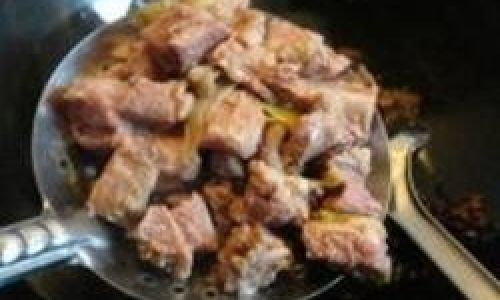
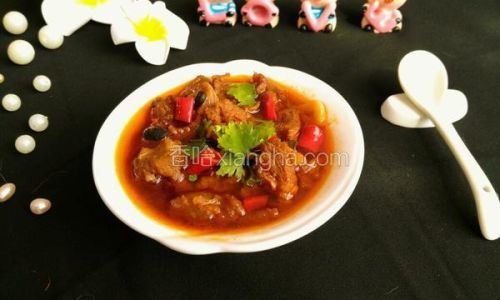
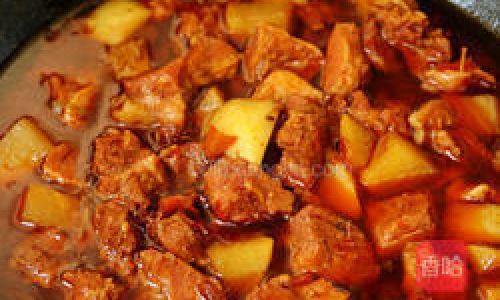
0 comments